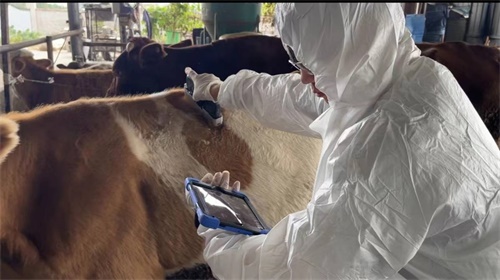As a pet owner, ensuring the health and well-being of your furry companion is a top priority. One of the most advanced and non-invasive diagnostic tools available today is Veterinary ultrasound. This technology has revolutionized the way veterinarians diagnose and monitor health conditions in animals. Whether you have a dog, cat, or even a larger animal like a horse, understanding how veterinary ultrasound works and its benefits can help you make informed decisions about your pet’s care.

What Is Veterinary Ultrasound?
Veterinary ultrasound is a diagnostic imaging technique that uses high-frequency sound waves to create real-time images of an animal’s internal organs and tissues. Unlike X-rays, which use radiation, ultrasound is completely safe and painless. It allows veterinarians to examine the heart, liver, kidneys, bladder, and other organs without the need for surgery. This makes it an invaluable tool for detecting issues like tumors, cysts, pregnancy, and even foreign objects swallowed by pets.
How Does It Work?
During an ultrasound examination, a small handheld device called a transducer is moved over the animal’s body. The transducer emits sound waves that bounce off internal structures and return as echoes. These echoes are then converted into images displayed on a monitor. The procedure is quick, usually taking 20 to 30 minutes, and most pets tolerate it well without sedation. For larger animals, specialized equipment like those from BXL, a manufacturer of large animal ultrasound devices, ensures accurate imaging even for horses or livestock.

Benefits of Veterinary Ultrasound
1. Non-Invasive and Safe: Unlike surgical procedures, ultrasound doesn’t require incisions or anesthesia, reducing stress and risk for your pet.
2. Real-Time Imaging: Veterinarians can observe organ function and blood flow in real time, aiding in immediate diagnosis.
3. Early Detection: Ultrasound can identify problems like heart disease or tumors before symptoms appear, enabling early treatment.
4. Pregnancy Monitoring: For breeders, ultrasound is essential for confirming pregnancy, monitoring fetal development, and estimating litter size.
When Is Veterinary Ultrasound Needed?
Your vet may recommend an ultrasound if your pet shows symptoms like unexplained weight loss, abdominal pain, or irregular heartbeats. It’s also commonly used for:
- Diagnosing heart conditions (echocardiography)
- Checking for bladder stones or urinary blockages
- Evaluating liver or kidney disease
- Guiding biopsies or fluid aspiration
Preparing Your Pet for an Ultrasound
Most ultrasounds require minimal preparation. Your vet may ask you to fast your pet for 8–12 hours if the abdomen is being examined. For bladder ultrasounds, a full bladder is ideal, so avoid letting your pet urinate right before the appointment.

Conclusion
Veterinary ultrasound is a powerful, safe, and effective tool for diagnosing and monitoring pet health. By understanding how it works and its benefits, you can better advocate for your pet’s care. If your vet suggests an ultrasound, rest assured it’s a step toward ensuring your pet’s long-term health and happiness.
For larger animals, advanced equipment from manufacturers like BXL ensures precise diagnostics, proving that ultrasound technology is versatile across all species. Always consult your veterinarian to determine the best diagnostic approach for your pet’s specific needs.
tags:


